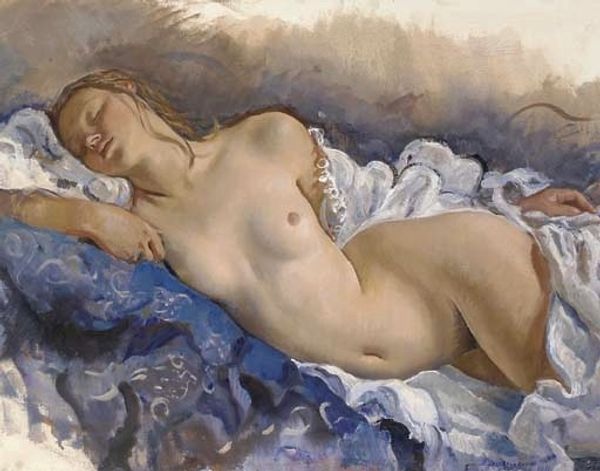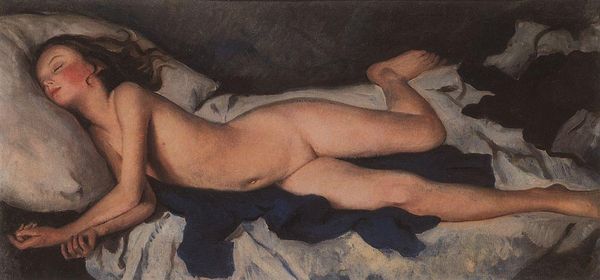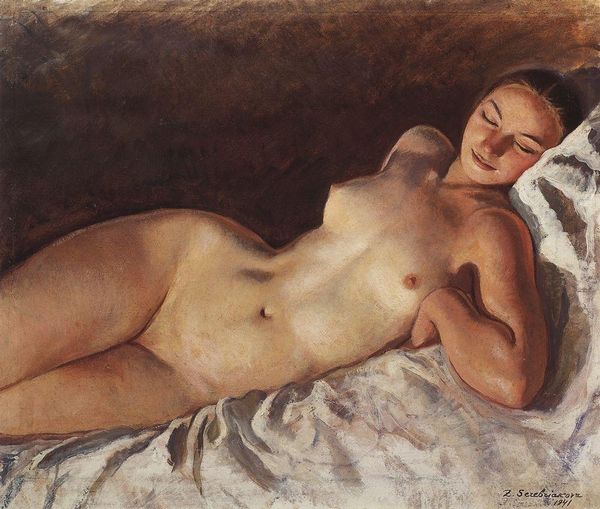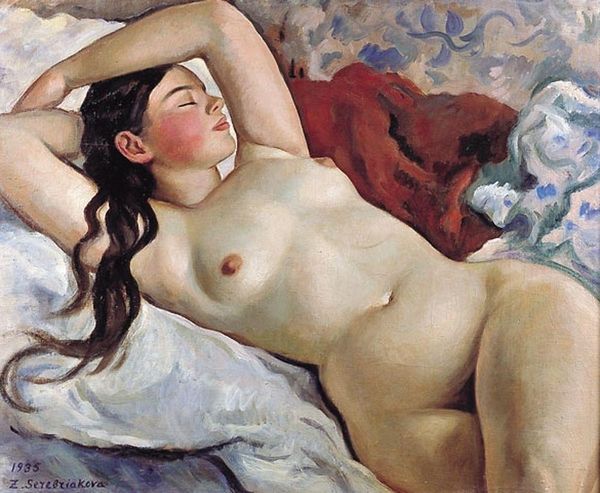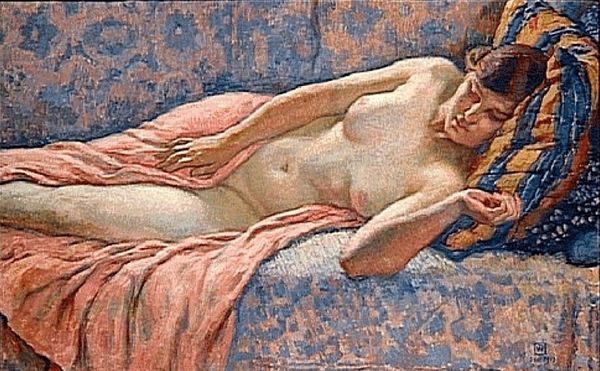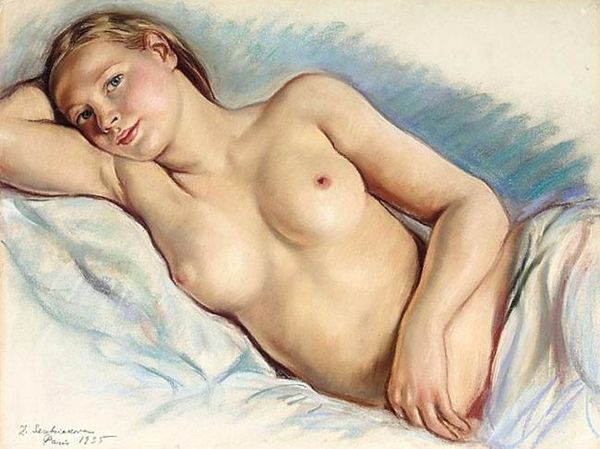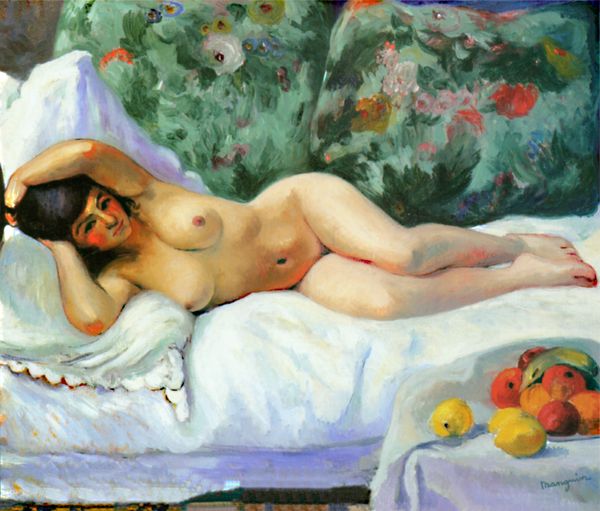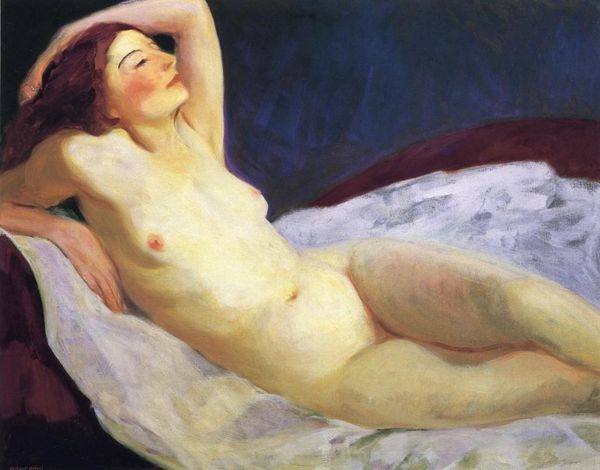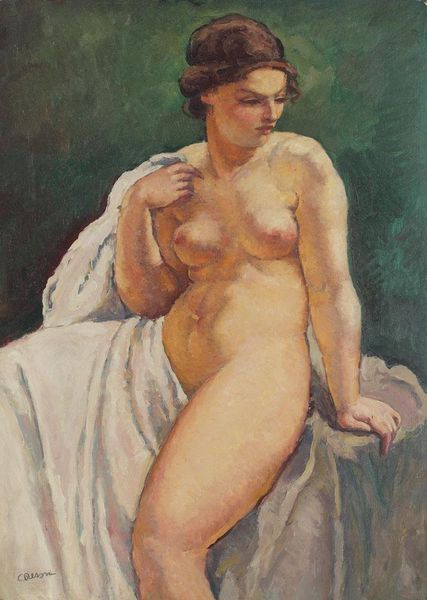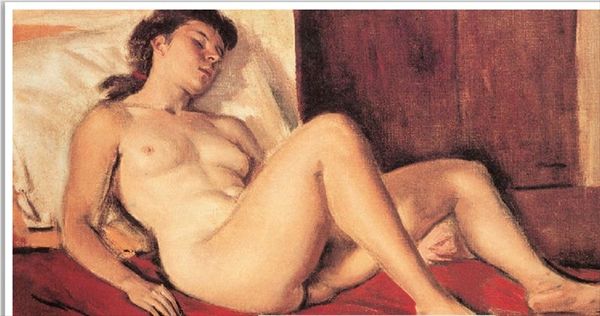
painting, oil-paint
#
portrait
#
painting
#
oil-paint
#
figuration
#
oil painting
#
female-nude
#
intimism
#
russian-avant-garde
#
portrait drawing
#
nude
#
portrait art
#
expressionist
#
realism
Copyright: Zinaida Serebriakova,Fair Use
Editor: Zinaida Serebriakova’s “Sleeping Nude with a Red Shawl,” painted in 1930, captures a moment of intimate repose. The soft brushstrokes and warm tones create a sense of vulnerability and tranquility. What’s fascinating to me is how the shawl seems to simultaneously conceal and reveal. How do you interpret this work in relation to the artist’s historical context? Curator: This painting invites us to consider the complex position of women artists in the early 20th century. Serebriakova, working within the Russian avant-garde and later as an émigré in Paris, negotiated traditional themes like the nude while subtly challenging societal expectations. The red shawl, as you point out, is key. It’s not simply decorative; it's a signifier. Does it evoke ideas about the sitter's personal narrative, autonomy, or perhaps the male gaze in artistic representations? Editor: It definitely challenges a purely objectified reading. The subject seems so unaware of the viewer, almost defiant in her slumber. Does the "Sleeping Nude" speak to feminist ideals, particularly concerning women reclaiming ownership over their bodies? Curator: Precisely! Her vulnerable sleep transcends mere eroticism. This intimate portrayal reflects broader dialogues around female agency, desire, and the rejection of patriarchal structures. Even the choice of oil paint is relevant, given its association with a tradition of male artists depicting women. How does this image prompt you to reflect on contemporary portrayals of women, especially on questions about consent? Editor: I see a parallel in how contemporary artists reclaim the nude, pushing for diverse body representations and challenging outdated beauty standards. This painting, despite its historical context, still feels incredibly relevant. Curator: Agreed. And thinking about how identity impacts the work, can you imagine how this might be viewed differently depending on one's background and experiences? Editor: Absolutely! The more we bring intersectional perspectives into art history, the richer our understanding becomes. Curator: It's about continuing these conversations. Each gaze brings fresh questions and new interpretations. Editor: It makes me see beyond the surface of the artwork. Thank you!
Comments
No comments
Be the first to comment and join the conversation on the ultimate creative platform.

